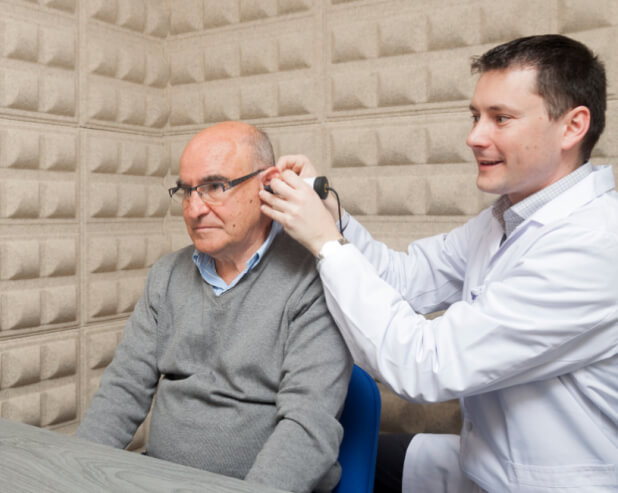Find an ear wax removal clinic near you
Looking for a private ear wax removal clinic near you? Type your location, postcode or area code in the search box, hit “Search” and select your closest clinic.
Why choose Orejas for earwax removal?
Same-day ear wax removal
When your ears are blocked, you don’t want to wait weeks. You want it sorted and you want it sorted right now. That’s why Orejas offers same-day ear wax removal appointments.
Safe ear cleaning
To ensure your safe ear wax removal experience, we only list clinics whose clinicians have the relevant qualifications. We go a step further to display their qualifications on our website. Click the “View qualification” button on any of our clinic pages.
Nationwide coverage
We continue to partner with ear wax removal clinics all over the UK to ensure you always find a clinic close by when you search for “ear wax removal near me” on Google or your favourite search engine.
How it works
Three simple steps to instant relief
1. Enquire now
Get in touch to book an ear wax removal appointment. Typically, we can see you on the same day.
2. We examine and remove wax
Our clinician will examine and remove your ear wax using the most relevant procedure in a gentle and painless way.
3. Instant relief and follow up
Experience instant relief after the procedure. We will provide a complimentary follow-up appointment at no cost to you, if needed.
About earwax
Earwax, which has its medical term as cerumen, is the substance secreted in healthy ear canals. The outer third of the ear canal hosts the sebaceous glands which produce sebum and modified apocrine glands which produce apocrine sweat. When combined, these excretions form what we know as ear wax. It is typically brown or orange in colour.
The main functions of ear wax are to lubricate and protect the ear canal from bacteria and fungi. The presence of wax in the ear canal is unharmful and due to the migration of skin cells in the ear canal, the ear wax falls out on its own from time to time. Hence the saying “the ears are self-cleaning”.
In some cases, the migration of these skin cells can be altered when objects such as cotton buds are used to clean the ear. Over time, an accumulation of cerumen in the ear canal can cause hearing loss, itchiness, vertigo, pain, tinnitus, and the feeling of intense pressure in the ears.
How we clean blocked ears
The main methods used for professional ear cleaning are microsuction, endoscopic suction, syringing, irrigation, and manual instrumentation. There is no one-size-fits-all procedure and your clinician may find it appropriate to use any of these procedures to clean your ears depending on different variables. However, it is important to note that ear syringing is a discredited method of ear wax removal. This is due to its potential side effects such as ear drum perforations, ear canal rupture, and ear infections.
Microsuction
Microsuction is a term that describes an ear wax removal technique where the clinician connects a suction probe to a suction machine to extract wax from the ear using a microscope as the primary viewing equipment. This method of ear wax removal is considered gold-standard.
Endoscopic suction
Endoscopic suction is similar to microsuction in that a suction machine is used to remove the ear wax. However, the viewing mechanism for this procedure is an endoscope. Endoscopic suction is also considered a gold standard method of ear wax removal.
Ear irrigation
Ear irrigation uses water (ideally at body temperature) to gently dislodge and flush out the wax in your ears. This procedure is only ideal for some and our clinicians will check for contraindications before commencing.
Manual instrumentation
This procedure involves the use of a specially designed tool for ear wax removal such as the Jobson Horne probe or forceps to safely remove any ear wax close to the entrance of the ear canal.
Before your ear wax removal appointment
Use medical-grade olive oil drops for 3-4 days if you do not have a perforation or have had previous ear surgery.
Do not try to clean the ear wax yourself by inserting any small objects such as a cotton buds into your ears.
Do not use ear candles as it has no scientific evidence of benefit for ear wax removal management and this may result in a serious injury.
What to expect at your ear wax removal clinic appointment
You will be seen by a fully-trained and certified professional. The appointment can take around 30 minutes.
- We will ask a few questions to get a better understanding of your ear health.
- You may be asked to complete a consent form before the procedure.
- The healthcare professional will examine your ear using an otoscope.
- Details on the ear wax removal procedure and the equipment that will be used will be explained to you.
- The healthcare professional will carry out the ear cleaning procedure and advise you on any necessary aftercare.
- We will welcome any questions you may have.


Ear wax removal home visits
Unable to visit our clinic? Request an ear wax removal home visit and experience UK’s most comprehensive ear cleaning service at the comfort of your home. Our fully-trained and certified professional will be at your disposal.
- Once you request a home visit, we will contact you by email or phone to confirm a suitable time for the visit.
- Our clinician will arrive promptly and have ID for identification.
- The clinician will disinfect their designated working surface in your home.
- The rest of the procedure is similar to what happens in-clinic.
- You will receive the same standard of care as an in-clinic appointment.
Ear wax removal FAQs
See what people are asking
